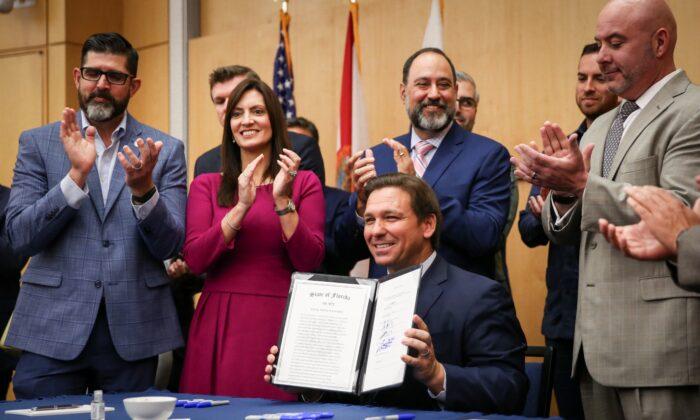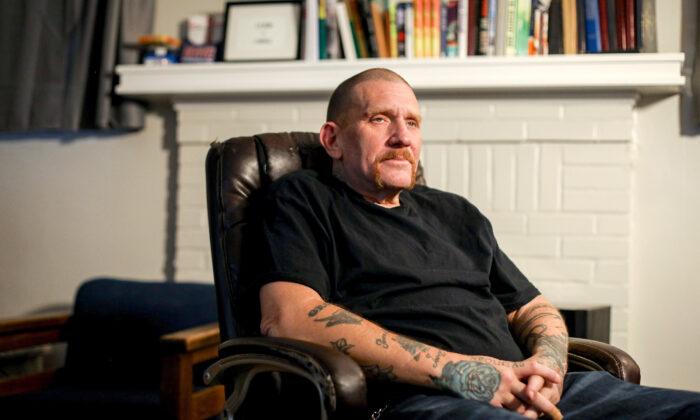Hurricane Dorian weakened slightly on Sept. 2 but was still “extremely dangerous,” with maximum sustained winds nearing 145 mph and packing even stronger gusts, the National Hurricane Center (NHC) announced.
Dorian hovered over the Bahamas on Sept. 2, shredding roofs, hurling cars, and even forcing rescue crews to take shelter until the onslaught passed. Forecasters said the storm would creep closer to the U.S. coast, where more than a million people have been ordered to evacuate.
As many as 13,000 homes in the Bahamas may have been destroyed or severely damaged, the International Federation of Red Cross and Red Crescent Societies said.
While forecasters expect Dorian to stay just offshore, meteorologist Daniel Brown cautioned that “only a small deviation” could draw the storm’s dangerous core toward land.
By late morning, the water had already reached rooftops and submerged palm trees in Grand Bahama. One woman filmed floodwaters lapping at the stairs of her home’s second floor.
The storm will raise water levels by as much as 18 to 23 feet in areas of Grand Bahama and be accompanied by large and destructive waves, the NHC said. It warned of the risk of “extreme destruction on the island.”
Evacuations
Trump approved emergency declarations for Georgia and South Carolina, according to multiple Sept. 2 White House announcements. The declarations authorize the Federal Emergency Management Agency (FEMA) to coordinate disaster relief efforts.South Carolina Gov. Henry McMaster issued an order Sept. 1 for the mandatory evacuation of his state’s entire coast. The order, which covers about 830,000 people, was to take effect at noon on Sept. 2, at which point state troopers were to make all lanes on major coastal highways one-way heading inland.
“We can’t make everybody happy, but we believe we can keep everyone alive,” McMaster said.
A few hours later, Georgia Gov. Brian Kemp ordered mandatory evacuations along that state’s coast, also starting at midday Sept 2.
Authorities in Florida ordered mandatory evacuations in some vulnerable coastal areas. North Carolina Gov. Roy Cooper warned his state that it could see heavy rain, winds, and floods later in the week.
Dorian first made landfall Sept. 1 in the Bahamas at Elbow Cay in Abaco Island, then made a second landfall near Marsh Harbour. A storm surge was reported at 18 to 23 feet.
He also urged coastal residents to heed evacuation orders.
“Get out now while there’s time and while you have fuel available,” he said in a news conference from the state’s emergency operations center in Tallahassee.
Trump, joined with other U.S. officials, was at the FEMA headquarters on Sept. 1 to receive a briefing on Hurricane Dorian. He said that he and his staff were receiving “frequent updates to ensure that we are fully prepared.”
“It’s been moving very slowly. It’s a bad thing, not a good thing. The slower it moves, the bigger it is, and the bigger it gets. But we want to minimize any unnecessary risks to the public and our brave first responders.”





